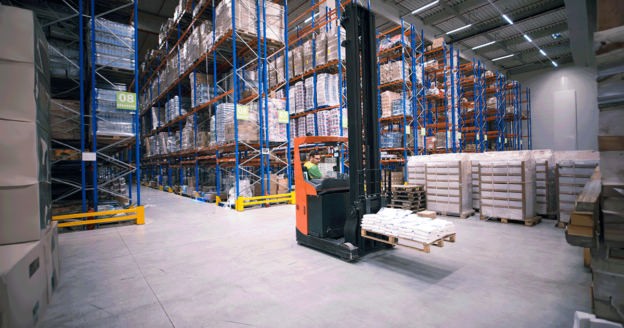In today’s industrial landscape, upgrading lithium forklift batteries offers significant advantages over traditional options. This guide focuses on seamlessly integrating into your fleet, optimizing efficiency and sustainability.
Lithium forklift batteries provide superior performance compared to conventional options, making them an attractive choice for businesses seeking enhanced productivity and reduced environmental impact. This guide will walk you through the process of transitioning your fleet to lithium batteries, maximizing benefits while minimizing disruption.
Let’s explore the transformative potential and how they can revolutionize your operations.
Understanding Lithium Forklift Batteries
Lithium forklift batteries represent a significant technological advancement in the material handling industry. Understanding their key features and benefits is essential for making informed decisions about integrating them into your fleet.
Key Characteristics of Lithium Batteries:
Longer Lifespan: Lithium batteries typically have a longer lifespan than traditional lead-acid batteries. This means fewer replacements and lower total cost of ownership over time.
Fast Charging: One of the most significant advantages of lithium batteries is their fast charging capability. With quick charge times, downtime for forklifts is minimized, leading to increased productivity.
High Energy Density: Lithium batteries provide remarkable energy density, storing more energy in a compact size compared to traditional options.
Maintenance-Free Operation: Unlike lead-acid batteries, lithium batteries require minimal maintenance, reducing the need for regular watering, cleaning, and equalization.
Advantages of Integrating Lithium Batteries:
Improved Performance: Lithium batteries deliver consistent power output throughout their charge cycle, ensuring consistent performance of your forklifts.
Enhanced Efficiency: Faster charging times and longer run times between charges result in increased operational efficiency and reduced downtime.
Environmental Sustainability: Concerning environmental impact, lithium batteries are a greener choice compared to their lead-acid counterparts due to their reduced use of hazardous materials and recyclability.
Assessing Your Fleet
Before integrating these batteries, thoroughly assess your fleet:
Inventory Evaluation: Record forklift make, model, and battery specifications.
Usage Patterns Analysis: Determine usage frequency, duration, and intensity.
Operational Requirements: Consider lifting capacity, maneuverability, and environmental factors.
Compatibility Check: Ensure forklifts can accommodate lithium batteries and identify any needed modifications.
By assessing your fleet’s current state and requirements, you’ll develop a tailored plan for a smooth transition to lithium batteries, optimizing efficiency.
Planning the Integration Process
A well-thought-out plan is crucial for successfully integrating forklift batteries into your fleet. Follow these steps:
Set Clear Goals and Objectives: Define what you aim to achieve with the integration, whether it’s improving efficiency, reducing maintenance costs, or enhancing sustainability.
Develop a Timeline and Budget: Establish a realistic timeline for the integration process, taking into account factors such as procurement, installation, and training. Allocate resources effectively to ensure a smooth transition without exceeding budget constraints.
Assign Responsibilities: Clearly define roles and responsibilities for team members involved in the integration process. Assign tasks such as researching battery options, coordinating installations, and conducting training sessions.
By planning comprehensively, you’ll lay the groundwork for the successful integration of batteries into your fleet, maximizing the benefits of this advanced technology
Selecting the Right Lithium Battery Solution
Choosing the appropriate lithium battery solution is critical for the success of your integration project. Consider the following factors:
Research Available Options: Explore the various lithium battery options available in the market. Look for reputable manufacturers known for quality and reliability.
Evaluate Technical Specifications: Assess factors such as battery capacity, voltage compatibility with your forklifts, and charging requirements. Ensure that the chosen batteries align with your fleet’s operational needs.
Consider Support Services: Evaluate vendor reputation and the availability of warranty coverage and technical support services. Choose a supplier that offers comprehensive support to address any issues that may arise during integration and beyond.
By carefully selecting the right lithium battery solution, you’ll lay the foundation for a successful integration that enhances the efficiency and performance of your fleet.
Implementing the Integration
Executing the integration of forklift batteries into your fleet requires careful planning and execution. Follow these steps to ensure a smooth transition:
Prepare the Existing Fleet: Conduct any necessary preparations, such as retrofitting forklifts to accommodate lithium batteries or ensuring adequate charging infrastructure is in place.
Procure and Install Lithium Batteries: Acquire the selected lithium batteries from your chosen supplier and install them in your forklift fleet according to manufacturer guidelines. Ensure proper installation to optimize performance and safety.
Conduct Initial Testing: Test the newly installed lithium batteries to verify functionality and performance. Monitor for any issues or anomalies and address them promptly.
By methodically implementing the integration process, you’ll minimize disruptions to your operations and maximise the benefits of transitioning to lithium forklift batteries
Monitoring and Maintenance
Regular monitoring and maintenance are essential for optimizing performance and longevity. Follow these steps:
Establish Maintenance Schedules: Set up regular maintenance schedules for lithium batteries, including tasks such as inspections, cleaning, and testing.
Implement Monitoring Systems: Utilize monitoring systems to track battery performance and usage patterns. Monitor factors such as charge/discharge cycles, temperature, and voltage levels to identify any issues early.
Prompt Response to Issues: Respond promptly to any signs of battery degradation or malfunctions. Address issues such as cell imbalance, capacity loss, or abnormal behaviour to prevent potential downtime and ensure uninterrupted operations
Optimizing Performance and Efficiency
Maximize the benefits of your lithium forklift batteries:
Fine-tune operations: Optimize charging schedules and routes for efficiency.
Save Energy: Encourage energy-efficient driving and equipment usage.
Continuous Improvement: Monitor metrics and adjust operations for ongoing optimization.
Prioritizing performance and efficiency ensures maximum productivity and sustainability.
Lithium Integration: Paving the Way Forward
Integrating these into your fleet offers significant benefits in efficiency and sustainability. By following the steps outlined in this guide, you’ll navigate the transition effectively.
From understanding the technology to optimizing performance, each step is crucial. Continuous monitoring and maintenance ensure long-term success.
Thank you for joining us on this journey toward a more efficient and sustainable future. Here’s to harnessing the power of lithium technology for success!




